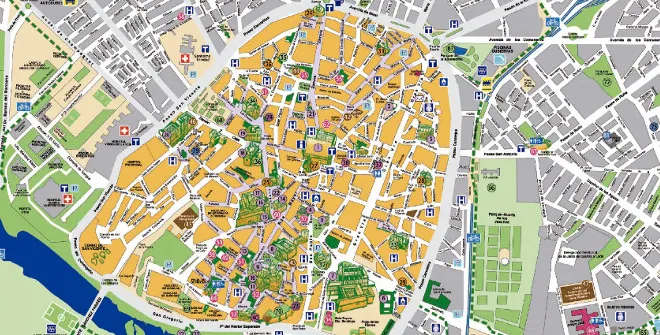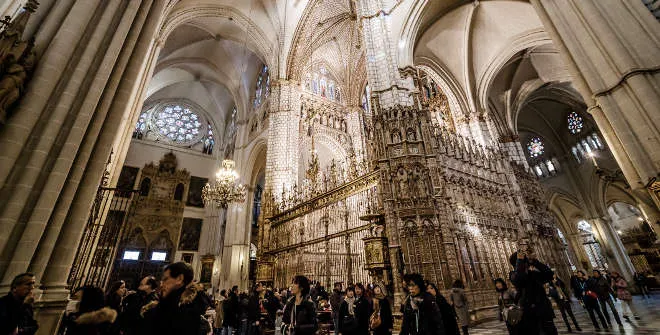Salamanca
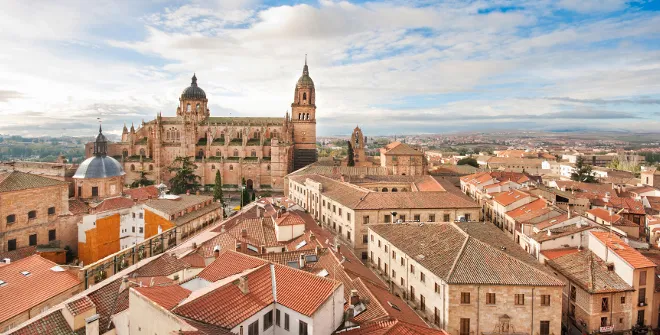
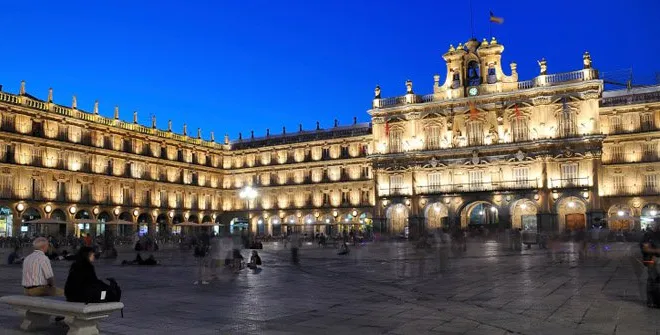
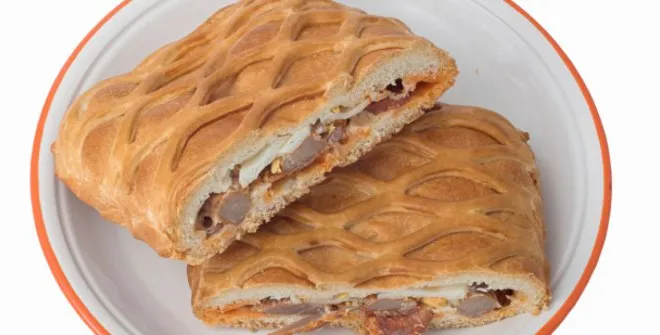
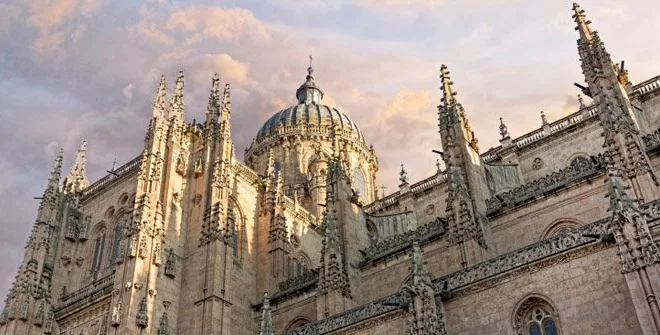
As the first Spanish city to found a university, Salamanca is filled with students especially in the historic district. The past is visible in the Old Cathedral, the huge Plaza Mayor and the Monterrey Palace, all splendid buildings that rightfully earned the city a place on the Unesco World Heritage Site list in 1988.
Old Cathedral and New Cathedral
The Old Cathedral, built in the Romanesque and Gothic styles between the twelfth and the fourteenth centuries, has a basilica ground plan that resembles a Latin cross with a central nave and two aisles. The New Cathedral, erected from the sixteenth to the eighteenth centuries, combines a mix of architectural styles, being mainly Gothic with Baroque additions. Set into the facade by the north entrance to the 300-year-old New Cathedral, there is a carved figure that looks like a modern astronaut. Owing to the antiquity of the building, we assume that this carving is part of the restauration work carried out on the Cathedral in 1992.
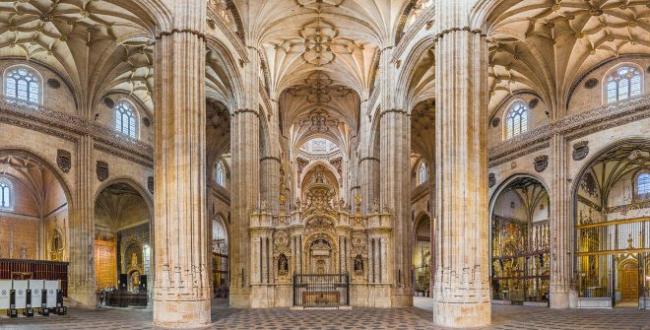
The construction of this building, the one that best represents the University of Salamanca, commenced in 1411 and was completed only in 1533. The building of the Escuelas Mayores (Major Schools) is the most representative of the University of Salamanca. Legend has it that students who could spot in the façade, an outstanding example of the Plateresque style, a sculpted frog on a skull would pass their exams with flying colours.
Casa de las Conchas
Built in the late 15th century the Casa de las Conchas (House of Seashells) has a Gothic façade decorated with 350 seashells typical of the Order of Santiago/St. James. The shells remind us of the first owner of the house, Rodrigo Maldonado de Talavera, a knight of the Order of St James.
A palatial mansion in the Modernist style built in 1905, Casa de Lis (House of Lis) stands on the Salamanca walls. Today, it houses a museum devoted to art nouveau and art deco.
Located in the heart of Salamanca, this palace was built by the 3rd Count of Monterrey in 1539. It’s in the Plateresque style, typical of the Renaissance in Spain. The towers and chimneys decorated with lions and fantastic animals are really amazing.
Housed in a Renaissance building, the convent belongs to the Dominican Order. Its interior boasts an altarpiece by José de Churriguera, the royal cloister and the stairwell by Soto.
Plaza Mayor
The nerve centre of Salamanca, the Plaza Mayor is surrounded by golden stone buildings. The Town Hall and the Royal Pavilion, which has busts of some of the kings of Spain.
The history of Salamanca is closely linked to that of the university. In 1130 there were cathedral schools that preceded the schools founded by Alfonso IX of León in 1218. Until the fifteenth century, classes were held in the cloisters of the Cathedral, in rented buildings and in the Church of San Benito. In 1401 dedicated school buildings were constructed.
In the Golden Age, four out of the nine major schools of Castile were based in Salamanca. This explains why the city has been so relevant to Spanish education and culture. The University of Salamanca has attracted renowned students and scholars like poets Fray Luis de León and San Juan de la Cruz, grammarian Antonio de Nebrija, defender of the Indians, theologian and historian Bartolomé de las Casas, humanist Beatriz La Latina Galindo and author Miguel de Unamuno, to name but a few.
At present, Salamanca is among the Spanish cities with the largest student community. It attracts people from every Spanish provinces and many coming from abroad, who attend Spanish language courses.
Easter, Lunes de Aguas, the feast of the Virgin of la Vega and the Festival of Castile-León Arts are the most important fiestas in Salamanca. Lunes de Aguas is on the Monday that follows Easter. The festival dates back to the sixteenth century, when the prostitutes were sent across the river Tormes and came back to town amidst cheers and dances. Currently, they re-enact this tradition and eat hornazos (homemade Easter bread) as they’ve done for centuries.
On 8 September, Salamanca commemorates the Virgin of la Vega, the local patron saint. Legend has it that she helped the city from the bandits that would invade Salamanca during the Spanish Succession War. In spring there’s the Festival of Castile-León Arts, with avant-garde performances and events. Another unmissable event is the University New Year’s Eve, which is held on the penultimate Thursday of term in December. A popular event at which thousands of university students see out the year, popping twelve sweets into their mouth instead of the traditional twelve grapes as the clock strikes midnight.
Livestock raising, favoured by pastures, the river Tormes and the plains, is widespread in the province of Salamanca, which explains why the local gastronomy offers roasted meat, cold meats, goat and sheep milk’s cheese.The cured meats and charcuterie you can sample here include 100% acorn-fed free-range Iberian ham with the Guijelo Designation of Origin.
Typical dishes are chanfaina (rice with giblets, tripe, lamb and chorizo), farinato (cold meat with pork, breadcrumb, onion, egg, olive oil and flour), hornazo (pie stuffed with cold meats), patatas revolconas (potatoes and bacon), Arribes de Salamanca sheep milk’s cheese and lentils from Armuña, among others. Momo, located at No. 13, Call San Pablo, and Mesón Cervantes and Café Real, both of which are in the Plaza Mayor, are very good options if you are looking to sample the local gastronomy in the city.
In the sweet chapter, Salmantinos keep alive a tradition cherished for centuries in local convents. The most famous recipes are those of turrón of La Alberca (kind of confectionery resembling nougat made from almonds and honey), amarguillos (almond cookies) and marzipan from the Convent of Las Dueñas, rolls and cookies made by the nuns of Alba de Tormes, huesillos of Béjar (sweet sticks), obispos from Yeltes and obleas (wafers). For those interested in buying some typical products from the region, visit specialised stores, such as Ibéricos El Castizo or La Tahona Delicatessen in the centre of Salamanca.
- By car: Salamanca is around 2 and a half hours’ drive from Madrid if you take the A-6 motorway.
- By bus: It takes 3 hours to get to Salamanca from Estación Sur de Autobuses bus terminal (Méndez Álvaro transport interchange).
- By train: The train from Atocha train station arrives in Salamanca in 2 hours and 45 minutes.
Links of Interest:
- Official Website Salamanca City Council
OTHER TRAIN EXCURSIONS
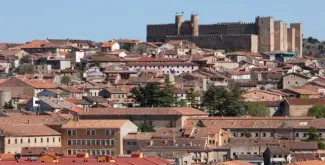
Medieval Train to Sigüenza
A wonderful and unique way of visiting a town steeped in history: 7 & 21 May, 4 & 16 June, 22 Sept, 1, 15 & 29 Oct 2022
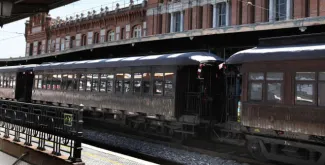
The Strawberry Train
A period train running between Madrid and Aranjuez recreates the Region of Madrid’s first rail line. Spring Season: Sat & Sun, from 22 April to 25 June.
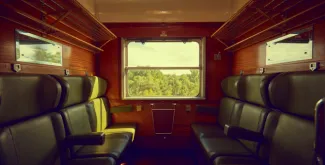
The Philip II Train
Travel from Madrid to San Lorenzo de El Escorial on a vintage train and unveil the secrets of King Philip II’s empire. Every week-end till 10 December.
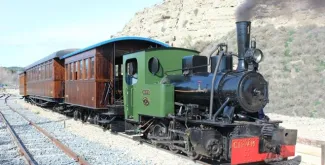
Arganda Train
Get on this vintage train whose steam locomotive pushes its way past stunning landscapes in southeast Madrid. Every Sunday, from 5 March to 28 May.
